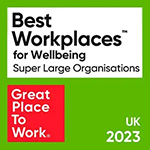Boogie Mites: Boosting Literacy Skills Through Music
Our partners at Boogie Mites explain how the fun of music making and singing can help to develop literacy skills in babies and young children.
Preparing school ready literacy skills can sometimes feel like a battle, especially with little ones stuck at home more than usual, but it shouldn’t even be. Early years music practice can help make it less of a chore and more of a joy.
Most of us love a good tune, and music often gets our feet tapping to the rhythm. Young children respond to this rhythm too, which is why music and movement are such powerful tools in early years teaching.
Parents getting involved and practicing musical activities at home can help boost school-ready literacy skills, while regular practice will also develop the way children process their hearing skills so they’re ready for phonics (letter sounds), reading and writing when the time comes.
Why Regular Music Practice Helps
Speaking and reading are based on phonemes – units of sound that make up words, like the ‘sh’ sound, and the ‘k’ sound. Our auditory processing system makes sense of these sounds when we hear them, helping us to understand speech.
Neuroscience research has found that regular music practice involving sequencing of sounds, and playing with syllables and phonemes, helps develop your child’s auditory processing system. This in turn strengthens the foundations for phonics and word recognition.
It’s the regular repetition of these music activities that has the most effective impact. So, it follows that practice at home can provide an even greater support for development, helping your child to be ready for school.
How does it work?
Evidence shows that children who start school with a strong phonological (sound) awareness will be the strongest readers and writers by age 7-8. Phonological awareness consists of; syllables, onset rime and phoneme awareness.
Music training helps children develop higher awareness of sounds. Music activities are often more engaging than phonics exercises, so children will be more attentive and motivated to take part.
Words and sentences have an intrinsic rhythm. Children can develop awareness of this by developing their sound processing skills and playing with syllables of words through music activities.
Songs and rhymes also have deliberate patterning and are extremely useful in developing the sound processing of stressed syllables – an area that is found to be weaker in children who suffer with dyslexia.
A sense of pattern supports children’s learning, enabling them to make links and notice connections between events and ideas, promoting thought and the capacity to learn generally. Indeed, music training has been found by neuroscientists to increase cognitive function significantly – measured by an increase in IQ.
Children develop interest in things they think we are interested in, so we need to demonstrate interest in sounds all around us, to support their exploration of sounds. Evidence shows that regular music practice in early years can develop phonological awareness better than any other activity. The latest controlled studies show that training in music at an early age is more effective in boosting a child’s reading skills than traditional phonics training.
What Happens at Nursery
Bright Horizons Nurseries follow the School Ready Literacy Music Programme, which supports the National Strategy for Literacy Guidance, Letters and Sounds Phase 1.
At nursery, teaching is broken down into key aspects involving:
- Tuning into sounds – listening and picking out sounds (auditory discrimination)
- Listening and remembering sounds in the order they are heard (auditory memory and sequencing)
- Talking about sounds – developing vocabulary and understanding of language and speech.
You can try incorporating these elements into your daily life at home with some of the Boogie Mites resources below.
Five easy ways to develop literacy through musical play at home
- Play with voice sounds – sing high and then low, fast and then slow, loud and then soft…
- Use instruments to keep the beat such as shakers, sticks and drums.
- Keep the beat with actions – marching, bobbing up and down, body percussion such as clapping, stamping and thigh-tapping.
- Develop a sense of rhythm using tapping sticks to tap out the rhythm (syllables) of words and tap along with the rhythm of the music.
- Leading sequencing of vocal sounds, actions and instrumental sounds for your child to repeat, then let them make up the sequence and you repeat.
Boogie Mites Downloadable Resources for Bright Horizons Families
Our School Ready Literacy Programme uses songs and activities that play with tempo, dynamics, timbre and pitch. We use homemade percussion instruments with some songs and the themes are always fun for young children, featuring jungles, transport and under the sea. Many different genres of upbeat music are used to offer a diverse experience, and to keep the adults as involved and as motivated as the children. Children can be progressed from simple sequences of actions and sounds to more complicated sequences and rhythms.
During lockdown, Boogie Mites created workshop videos for children to enjoy at home with their families and these have been added to the digital programme resources which you can purchase to enjoy with your children. They will love sharing the songs with you and the wider family at home, you can ensure they get the repetition to maximise the potential benefits, and because it’s fun! – https://boogiemites.co.uk/bh-bm-music-at-home/ target="_blank"
Use code BHPARENTS10% to claim a 10% discount off our Boogie Mites at Home packs.
Boogie Mites also have a Facebook page for parents where they share tips, resources and music-making ideas. You can follow it here: https://www.facebook.com/BoogieMitesMusicClub




